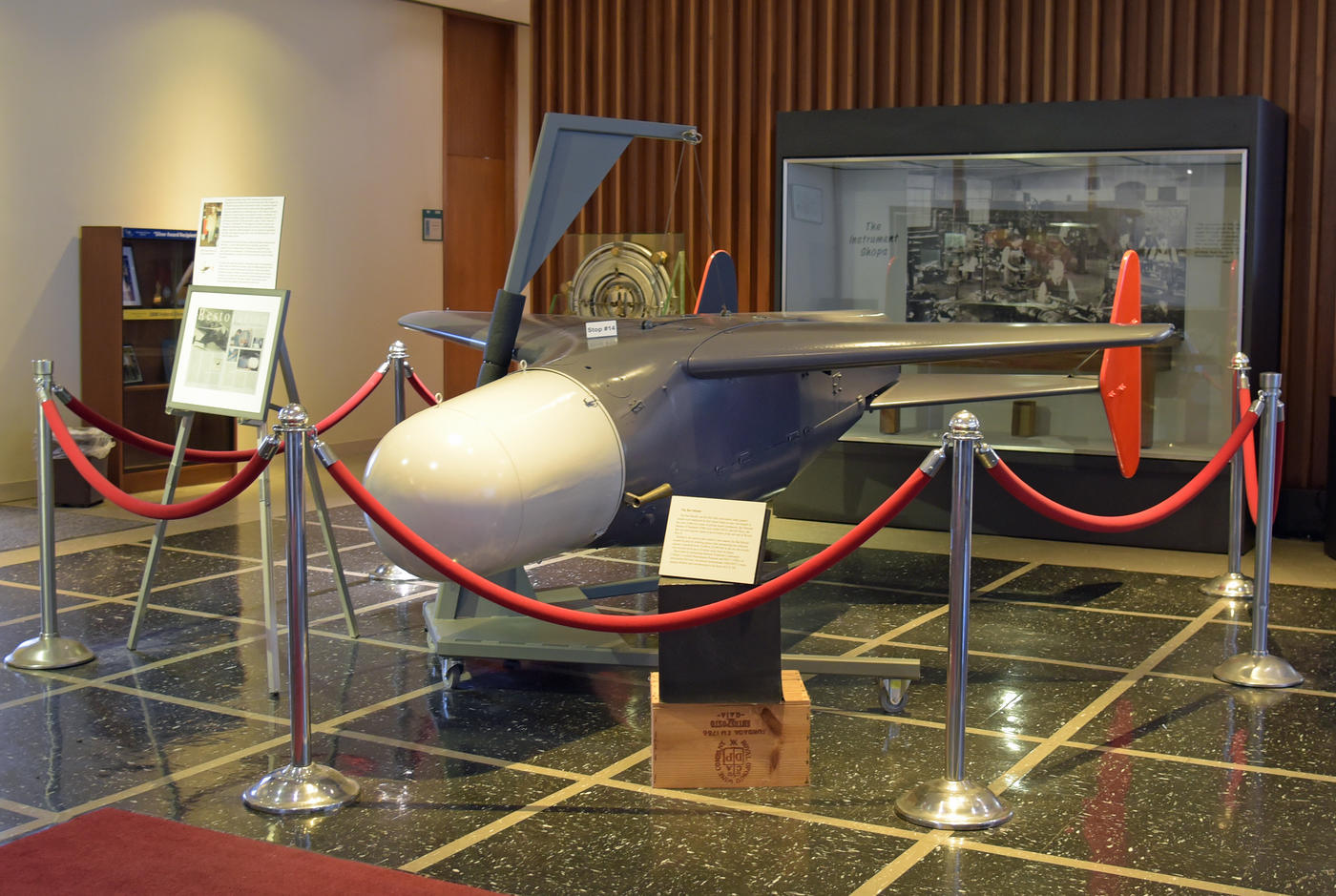How NIST Helped Build and Preserve a World War II Navy Missile
- The first fully automated guided missile system was used in combat in World War II.
- The missile, known as the Bat, was built at the National Institute of Standards and Technology (NIST), then known as the National Bureau of Standards.
- In 2000, remnants of a Bat missile were found in a warehouse. Aviation maintenance students from Frederick Community College worked to repair and reassemble the plane, which is now on display at NIST’s Gaithersburg, Maryland, campus.
A forerunner of today’s “smart weapons,” the Bat was the first fully automated guided missile used in combat. The U.S. Navy used it to destroy Japanese naval targets during World War II.

Like its namesake in nature, which uses sonar (sound waves) for locating objects, the Bat emitted radar (radio waves) pulses that reflected off a ship or structure to guide its path. Bell Telephone Laboratories and the Massachusetts Institute of Technology collaborated to build the Bat’s guidance mechanism. NIST developed the stabilization systems. The Bat was built at NIST's then-headquarters in Washington, D.C.
The Bat was nearly 4 meters (12 feet) long by 3 meters (10 feet). Carried by a Navy patrol bomber, the Bat was released from a height of more than 4,600 meters (more than 15,000 feet). From there, the Bat would glide silently down, relentlessly homing in on ships, bridges and other targets with deadly precision.
In all, some 2,600 Bat missiles were deployed.
During the summer of 2000, the remains of a Bat missile were discovered in a warehouse near NIST’s Gaithersburg, Maryland, headquarters. It was tattered and worn after more than 50 years in storage, yet its fuselage, wings and tail assembly were still intact. (The interior mechanisms, including the warhead, had been removed many years earlier.)
Fortunately for NIST, a local academic institution, Frederick Community College (FCC), ran an aviation maintenance program that provided the needed expertise and talent for the job. Students from FCC worked from January to March 2001 repairing, cleaning, painting and reassembling the Bat.
Today, the missile greets visitors to NIST's museum, looking almost exactly as it did when it was built in 1945.

Did You Know?
The leader of the NIST development team for the glide bomb was aerodynamics expert Hugh L. Dryden, who would become better known as the first deputy director of NASA.

